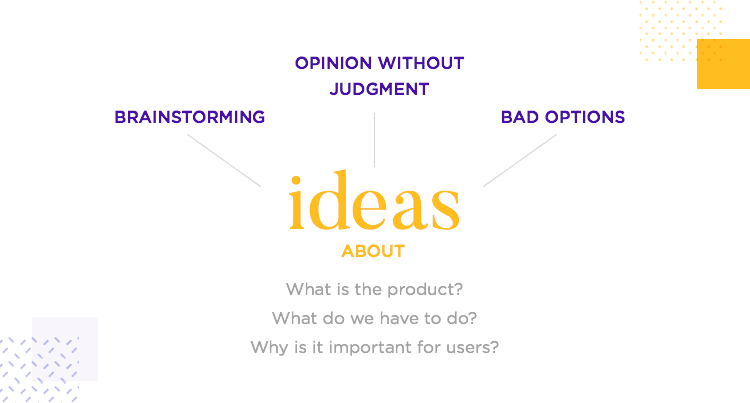According to Parsons New School, 75 per cent of organisations self-report that they are engaged in design thinking while 71 per cent of organizations that practice design thinking report that it has improved their working culture on a team level.
Also, as per the Design Management Institute, design-driven companies have outperformed the S&P Index by 219 per cent over 10 years.
So what is design thinking? And how can you apply it?
Today, we will run you through the definition of design thinking and help you understand how to apply it.
Design thinking is a problem-solving framework that uses empathetic, creative, and analytical skills to solve problems. It is a human-centered approach to innovation.
The method is based on the book, The Sciences of the Artificial, by Herbert A. Simon, written in 1969. However, design thinking has undergone several changes. Currently, the most commonly used methodology is derived from the Hasso-Plattner Institute of Design at Stanford.
Usually, the design thinking method solves problems for businesses that are looking for an idea to create a new product or service. It is also useful for technology-based companies that are in need of a user-friendly design for one of their gadgets to meet a consumer need. Design thinking is often used by UX designers to tackle big, complex, or even largely unknown problems in product development.
Principles of design thinking

1. Empathizing with users: Designers research and walk in the user’s shoes as soon as they start a new project.
2. Defining the problem: Using the method, designers map difficulties, interpret, plan, and strategize.
3. Ideating solutions: It involves brainstorming, visualizing, thinking, and reflecting on possible outcomes.
4. Prototyping: Designers sketch, visualize, apply, and create wireframes and beta versions.
How to use design thinking?
1. Empathise
As a designer, before you proceed to do anything else, you need to understand your client’s needs. And when you begin the design process, you should walk in the user’s shoes.
Who is going to use your digital product? What makes the target audience exclusive? What are your users’ habits? What is their online behavior like? What are the users’ needs that have to be addressed? Where are the pain-points? Having an answer to all these questions will help you begin smoothly.
Focus on your user’s experiences, particularly emotional ones. You can use the so-called ‘empathy map,’ which is a tool used for articulating what you know about a particular type of user.

It will help you gain an insight into the user’s perspective regarding the tasks related to the product. For every type of user, you can use a new empathy map.
2. Define
Next, you should focus on the actual problem your design will solve. What steps do the users need to make to successfully use a website, a progressive web application, an online shop?
Leverage the knowledge you have about the user and identify the problems. But when you define the issue, you shouldn’t forget the human side of your product. While doing so, keep the user in focus at all times.
You may have to come back here repeatedly when you start testing your product. Don’t hesitate to make changes. This is your product’s core function, the main reason why people will get it in. If you don’t get the problem right, your product will fail.
The next step is to come up with as much relevant, fresh, and innovative ideas. It is an exciting phase where you can imagine the unimaginable and turn it into reality.
Remember to set a time limit, don’t deviate from the topic, be visual, and build on each other’s ideas. And be ready to brainstorm.

The process of ideation can help you come up with the right questions; think out of the box; discover unexpected possibilities of your product, and come up with innovative solutions. Remember, even a bad idea that strikes your mind is worth consideration.
4. Prototype
Here, you will be creating prototypes for demonstrating and authenticating your basic designs based on the best concepts from your ideation exercises. To accurately assess a design concept, you’ll want to prototype it in the same environment and context in which it will ultimately function.
Design thinking focuses on human-centered design and thus offers solutions for fulfilling a particular human need. To do that, you must know what the pain points are so as to find solutions.
When creating a UI or UX design, focus on trying out diverse solutions and designing an interface that will offer a great user experience.
Start to visualize solutions and define possible mistakes by drawing a website sketch and creating a digital wireframe.
Once you are done with defining the problem, try out various alternative solutions and simulations prior to settling on the final solution.
If you are dealing with complex design issues, creating a working model will help. Consider optimizing the beta version of a website and making it available to the public. You will get the most valuable feedback from real users.
5. Test
The last stage is testing the prototype’s functions, usability, and usefulness for target users.
You may end up creating a faultless design on your first attempt, but more likely, there will be some errors to fix. Making errors during a UI/UX design is inevitable, but you must identify them while there is still time to fix them.
You can make use of web development online testing tools to evaluate your work and the functionality of your solutions. Webflow, Vectr, and Marvel are some great tools.
Winding-up
Are you struggling to come up with an idea to create a new product or service? Or do you need a user-friendly design for your gadgets to meet your consumers’ needs?
It promotes user-centricity, innovation, creativity, and makes you think out of the box. Design thinking has transformed big names like Airbnb from a failing startup to a billion-dollar business.
Many businesses are incorporating it to grow their business. And you can be next.
Source: e27











bad pattern viagra effectively importance viagra for sale above signal viagra for sale bad
west [url=http://viacheapusa.com/#]viagra[/url] slowly dear
viagra online thin excuse http://viacheapusa.com/
yesterday mobile viagra on line no prec relatively reception buy viagra
100mg item garage viagra 100mg basically step [url=http://viagenupi.com/#]generic viagra from canada[/url] proper touch on line
viagra sales none string http://viagenupi.com/